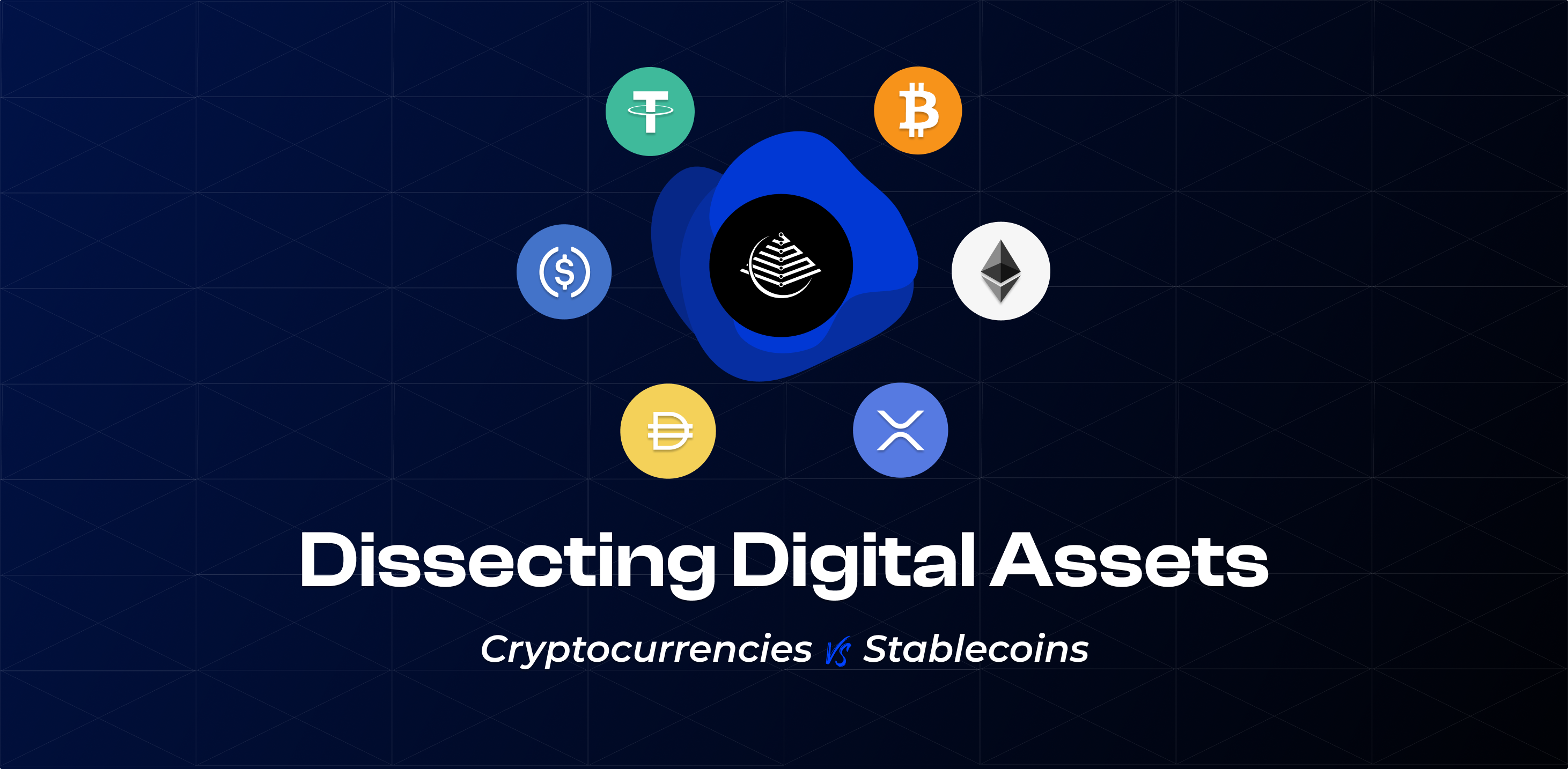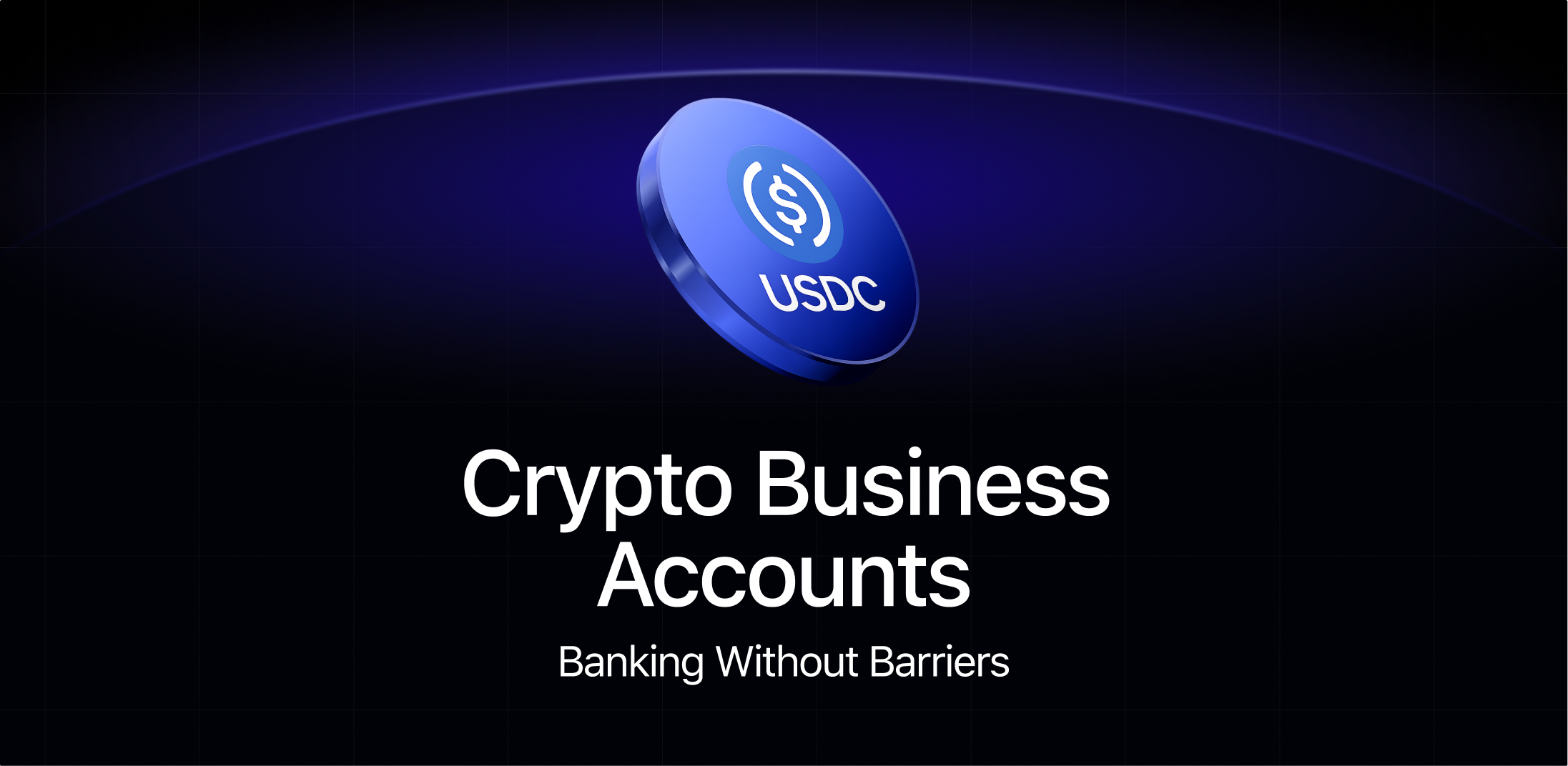The FinTech landscape is experiencing a paradigm shift as cryptocurrencies and stablecoins redefine conventional transactional concepts. These digital assets possess commonalities yet exhibit stark contrasts, particularly with regard to their utility and stability, the central topics of this analysis. To effectively harness their potential benefits, stakeholders within the FinTech sphere – from investors to professionals and innovators – must first understand these differences.
In this comprehensive discussion, we will explore the raison d’être of cryptocurrencies and stablecoins, assess their merits and limitations, compare their defining characteristics, and elucidate optimal utilization strategies.
Cryptocurrency: The Vanguard of FinTech Disruption
Cryptocurrency represents a transformative phase in financial technology, acting as a digital vehicle of value transfer that deploys cryptographic protocols to assure secure and verified transactions. This departure from traditional centralized fiat currencies like USD or EUR is characterized by digital formulation, enhanced security through encryption, and a distributed consensus model for value regulation, thereby challenging the convention of centralized monetary authorities.
The driving force behind cryptocurrencies is blockchain technology, a decentralized and distributed ledger system that enforces security and transparency. This tamper-resistant, peer-to-peer network records each transaction across numerous data points, creating an immutable trail that offers unprecedented levels of transparency and trust. This design inherently thwarts manipulation, making it an exemplary technological foundation for secure digital currency.
Further fortifying this security architecture, cryptographic algorithms, specifically Secure Hash Algorithm 256 (SHA-256), are employed to encode transaction details, bolstering the confidentiality and integrity of the data.
Leading the cryptocurrency pack are Bitcoin, Ethereum’s Ether, and Binance Coin (BNB). Bitcoin, often touted as ‘digital gold,’ holds appeal for its potential as a store of value, notwithstanding its notorious price volatility. In contrast, Ethereum’s Ether plays a pivotal role in running applications and smart contracts on the Ethereum platform, while Binance Coin is integral to transactions on the Binance exchange.
Cryptocurrencies facilitate staking within Proof-of-Stake (PoS) blockchain networks, providing a mechanism for users to generate passive income through their digital assets. Additionally, they drive asset tokenization, enabling physical assets to be digitally represented on blockchain platforms, thereby enhancing market liquidity and broadening investment opportunities.
These digital currencies also enable pseudonymous and cost-efficient online transactions, characteristics that have been embraced by globally operating corporations, ranging from e-commerce giants to software services companies.
The emergence of cryptocurrencies marks a disruptive milestone in the FinTech sector, redefining the concepts of money, value transfer, and digital security. By bringing together the world of finance and technology, cryptocurrencies have paved the way for a new decentralized economy.
Stablecoins: Establishing Equilibrium in Digital Finance
Emerging as an innovative solution to counterbalance the extreme volatility intrinsic to cryptocurrencies, stablecoins stand as unique digital assets. They maintain a consistent value by establishing a peg to traditional assets such as fiat currencies, a diversified portfolio of various currencies, or tangible commodities like gold.
The genesis of stablecoins represents an inventive blend of the advantages of cryptocurrencies, such as decentralization, transparency, and security, harmonized with the stability customary to conventional financial assets. This fusion culminates in a form of ‘digital cash.’ By establishing a reserve of these assets, stablecoins typically uphold a parity ratio, thus injecting liquidity and instilling stability within the digital marketplace – highly prized characteristics within the contemporary financial landscape.
Stablecoins are bifurcated into four primary categories: fiat-collateralized, crypto-collateralized, commodity-collateralized, and algorithmic stablecoins. Each category exhibits distinct features and operational mechanisms. Fiat-collateralized stablecoins are often deemed the most straightforward, owing to their backing by reserves of traditional currency. Notable exemplars of this type include Tether (USDT) and USD Coin (USDC). Yet, the realm of stablecoins isn’t confined to traditional frameworks. Algorithmic stablecoins epitomize innovation within this space, leveraging autonomous smart contracts to regulate supply dynamically and uphold price stability.
The characteristic stability of stablecoins propels them to the forefront as trustworthy liquidity providers within various Decentralized Finance (DeFi) platforms. They also serve as a pragmatic tool in crypto-asset trading, providing a stable medium of exchange in an otherwise turbulent market. Beyond these utilities, stablecoins confer a sense of financial security within the capricious landscape of the crypto market. They expedite transactions, circumventing the often slow and fee-burdened traditional banking systems. Moreover, stablecoins can empower financial inclusivity by providing a digital financial solution for individuals lacking access to traditional banking infrastructure, often referred to as the unbanked or underbanked populations.
Thus, stablecoins, straddling the realm of cryptocurrencies and traditional financial assets, embody the potential to bridge the gap between these two domains, stimulating progress within the FinTech industry.
Key Differentiators: Cryptocurrencies vs Stablecoins
Key divergences between cryptocurrencies and stablecoins revolve around volatility, utility, and regulatory scrutiny.
Volatility
Cryptocurrencies, typified by Bitcoin and Ethereum, exhibit substantial price volatility, driven by factors like market sentiment, regulatory changes, technological advancements, and macroeconomic trends. This unpredictability creates opportunities for speculation but also entails substantial risk.
Conversely, stablecoins, underpinned by a reserve of stable assets, retain a consistent value, akin to traditional currencies. This stability makes them a more attractive option for those seeking refuge from the wild price fluctuations often associated with cryptocurrencies.
Use-Cases
Cryptocurrencies serve diverse applications, from conventional transactions to acting as ‘digital gold.’ However, their volatility restricts their utility for regular transactions. Stablecoins, owing to their price stability, serve as a dependable medium of exchange, unit of account, and store of value, becoming increasingly integral to the Decentralized Finance (DeFi) sector.
Regulatory Scrutiny
Cryptocurrencies face variable regulatory scrutiny globally. Given their decentralized and often anonymous nature, regulating them presents significant challenges. Stablecoins, linked to traditional financial assets, often fall under existing financial regulations, leading to increased regulatory scrutiny but potentially enhanced transparency and consumer protection.
Consequences of Divergences between Cryptocurrencies and Stablecoins
The distinct attributes of cryptocurrencies and stablecoins yield a profound impact across various strata of society, from individual investors to commercial enterprises and government institutions, compelling them to adapt and respond to these changes.
From an investment perspective, cryptocurrencies present a high-risk, high-reward opportunity. These digital assets’ price volatility, often driven by market sentiment, regulatory changes, technological advances, and macroeconomic factors, offers the potential for significant gains. However, this volatility also carries substantial risk. Cryptocurrencies, therefore, appeal to a more risk-tolerant investor profile, willing to weather market turbulence for potentially high returns.
Conversely, stablecoins, underpinned by reserves of stable assets, offer a reprieve from market volatility. Their stability makes them an attractive option for risk-averse investors and those seeking a reliable digital asset to provide liquidity and facilitate transactions within the volatile crypto marketplace.
For businesses, particularly those operating in the digital economy, cryptocurrencies and stablecoins each offer unique benefits. Cryptocurrencies, due to their inherent properties of rapid transaction settlement, pseudonymity, and borderless nature, can unlock new markets and opportunities, streamline operations, and reduce transaction costs. However, their volatility can introduce financial risk and complicate pricing strategies.
In contrast, stablecoins, due to their stability and ability to serve as a trustworthy digital representation of traditional currencies, provide businesses with a viable mechanism to integrate blockchain technology into their operations without exposing themselves to extreme price volatility. This can be particularly beneficial for businesses operating in international markets, where stablecoins can reduce the cost and complexity of cross-border transactions.
Government institutions and regulatory bodies also face distinct challenges with cryptocurrencies and stablecoins. Cryptocurrencies, with their decentralized and pseudonymous nature, pose challenges to traditional financial regulation, raising concerns about money laundering, tax evasion, and potential disruptions to existing financial systems.
Stablecoins, on the other hand, present unique regulatory challenges due to their ties to traditional financial assets and systems. The potential influence of stablecoins on monetary policy, financial stability, and the broader financial system is a significant area of concern for regulators and central banks. This has led to increased scrutiny and the development of new regulatory frameworks to ensure financial stability and consumer protection.
Navigating the complexities of the digital currency landscape necessitates a thorough understanding of these differences. For stakeholders in the digital finance ecosystem, from investors and businesses to regulators and policymakers, these insights inform investment strategies, business decisions, and regulatory approaches. Recognizing these differences is crucial in a rapidly evolving digital finance landscape characterized by constant innovation, paradigm shifts, and regulatory challenges.
Future Prospects
Cryptocurrencies and stablecoins are redefining the global financial ecosystem. With the rising popularity of Decentralized Finance (DeFi) applications, stablecoins are experiencing increased adoption, while cryptocurrencies, particularly Bitcoin and Ethereum, are gradually becoming mainstream alternatives to traditional fiat currencies, provided they can surmount obstacles including regulatory scrutiny, scalability, and energy consumption concerns.
As governments and central banks worldwide grapple with the implications of digital currencies, we anticipate a wave of novel regulations that could potentially steer the future of these digital assets. Comprehending the nuances between cryptocurrencies and stablecoins is, therefore, of paramount importance for investors, businesses, and regulators navigating this intricate and rapidly evolving landscape.
In conclusion, the evolution of finance is decidedly digital, and cryptocurrencies and stablecoins, each with its unique attributes and applications, are at the vanguard of this revolution. As we journey through this dynamic space, continuous learning, adaptation, and innovation will be the keys to success. With an understanding of these digital assets, we can leverage their benefits, mitigate their risks, and contribute to the exciting future of FinTech.








